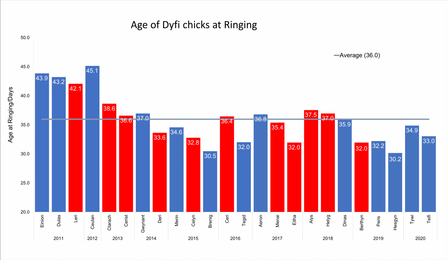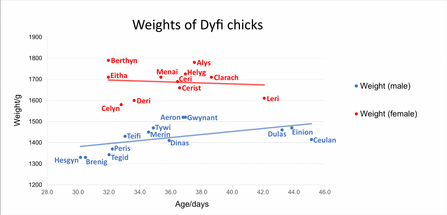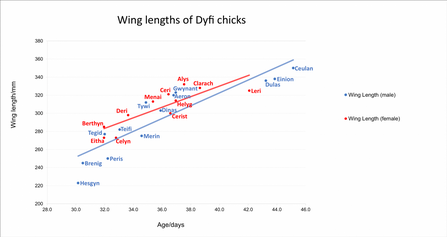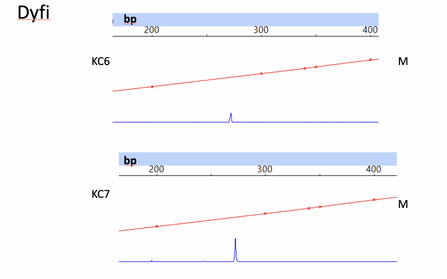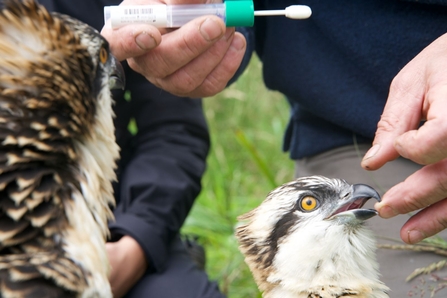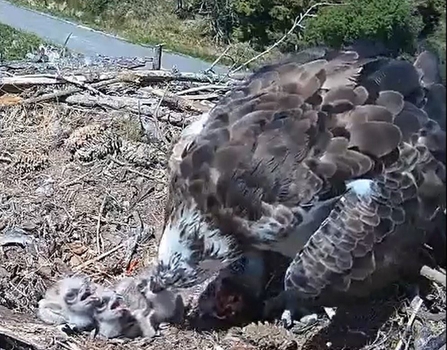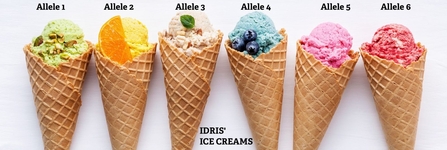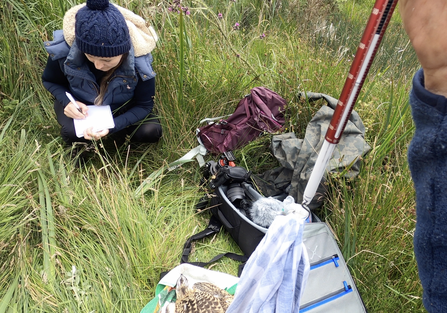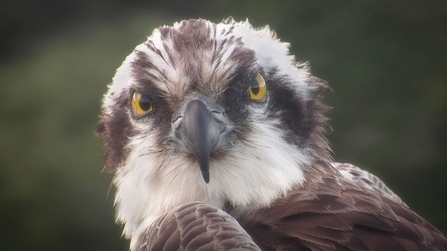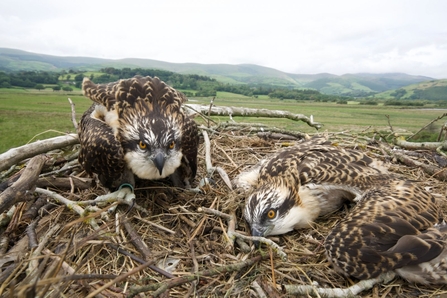Great News: The 2020 DNA results are in.
Gendering
As you know, we attempt a best guess at what sex our chicks are each year when we ring them under the nest at around five weeks old. The older the bird is, generally, the better your gender accuracy potential.
Both Teifi and Tywi were slightly under five weeks old at ringing in 2020.

